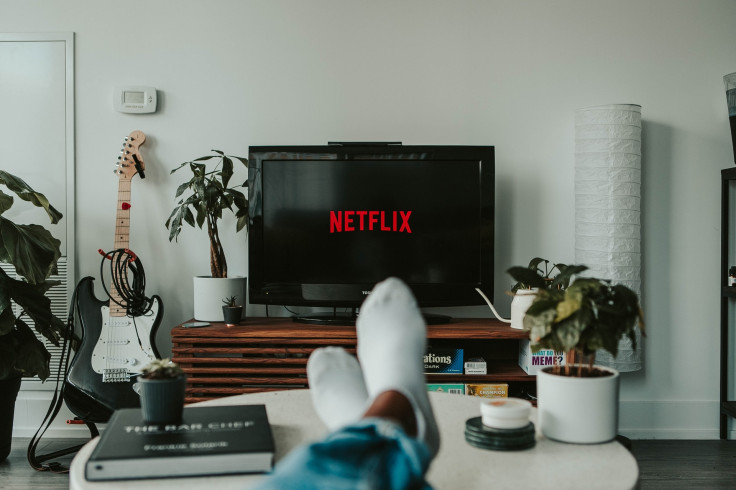Back to top Biggest Streaming Service for Movie Lovers


There are many movies lovers out there who, over the years, have gathered an extensive movie collection of DVDs and Blu-rays. Some collectors even have VHS tapes on the shelves that still get viewed.
But those formats now have a genuine rival that doesn't require physical copies. As a result, many movie enthusiasts are taking a solemn look at the alternative of streaming.

Who to Stream or Not to Stream? - That Is the Question
In this era of high-speed internet, streaming movies in 1080P or 4K has become a very real option for most people. High-speed Internet is still not available to many (about 6% of Americans - roughly 19 million), and that's particularly true for those in rural areas.
They, of course, may not have the bandwidth to stream any movie. Those in towns and cities, though, usually have access to some very high speeds indeed.
But, like so many things in life, streaming movies is rarely free. Yes, there are "free" channels, but if you cut the cord like because the commercials drove you nuts, then these free services are not for you either. They're every bit as bad as mainstream TV for the number of commercials served. These free services usually have older catalogs, and recently released movies won't be an option.
Understanding the Needs of a Movie Lover
While we consider ourselves to be serious movie lovers, although we don't always want to watch serious movies, our tastes are eclectic, and our movie collections reflect that eclecticism.
Space considerations have led me to make a move and look at streaming services instead. What we looked for in a service is this: a service that will allow you to watch movies for free, rent movies, and purchase movies that I will watch time and again. I would guess most film lovers will have similar requirements.
How We Measured
The main factor we considered was the total number of movies available on the service. Obviously, we didn't include the number of TV series available, since we're focusing on movies alone.
But the type of movie wasn't a factor either, which might be a concern for some. Movie fans that only want to view the "classics" might not be as interested in this service. For most movie lovers, though, bigger is better when it comes to the number of films in a library.
In a nutshell, this comparison looks solely at the number of movies available. But we don't differentiate between whether those platforms are all free or a mixture of free and paid.

Services Under Consideration
Obvious contenders were household names like Netflix, Amazon Prime Video, and Disney+ were understandably under consideration, but a few others that perhaps would not be so immediately obvious were also evaluated.
Although known to many, these are not usually considered one of the household "big boys" when it comes to movie libraries: Hulu, Vudu, YouTube TV, Sling TV, and HBO Max.
And the Winner Is...
From the figures that were available, the clear winner is Amazon Prime Video.
Amazon Prime Video in 2019 reported 13,000 movies, so when it comes to the biggest library, they are miles ahead of the competition. Netflix, by comparison, has a somewhat meager 3,700.
We were somewhat surprised at the Amazon/Netflix disparity. Being honest here, we expected Netflix to be a real competitor in this comparison, but it's obviously more of an honorable mention when the numbers are compared.
With Netflix viewers on our team (who have Amazon Prime Video too), the company has actually downsized its number of available streaming movies in recent years.
In fact, we believe its library has literally halved since 2012, but even so, we expected a closer fight, and that simply was not the case.
Hulu was lower than expected with a library around 2500 movies, but we were surprised to see that Vudu had a library of approximately 4700. That was way more than we anticipated!

Disney+ was also something of a surprise. Although it has a library of popular films, the total number available was only 500. HBO Max, by comparison, had 2000 movies available at launch.
Sling Tv was fairly low, having a reported 1500 movies available. It wasn't an insignificant number but still way down the list and not that surprising, really.
What did surprise me was the reported content available on YouTube, which was something over 6,000 movies, which put it into second place.
Amazon Prime as the Biggest Streaming Service
Amazon Prime Video was indeed the service with the most significant number of movies available to stream. Of course, the library consists of a mixture of "free" and "for rent" titles, which is something to be careful of when you're choosing a service.
Amazon's library is very mixed as regards quality, but then, that's also true of its main competitors. Want to watch a movie that is truly bad (hey, some people do)? You can. Looking for a movie that's so bad, it's good? You'll find it.
By the same token, if you want to watch one of the "greats," you'll be able to find that too. And, not surprisingly, there'll be films at every point in between.
Prime Video has the latest releases available for viewing, and, because of the pandemic, many studios are putting movies out for streaming rather than the traditional theater-streaming combo approach. If you want access to the biggest movie library out there, then Amazon Prime Video is the number one choice right now.




















